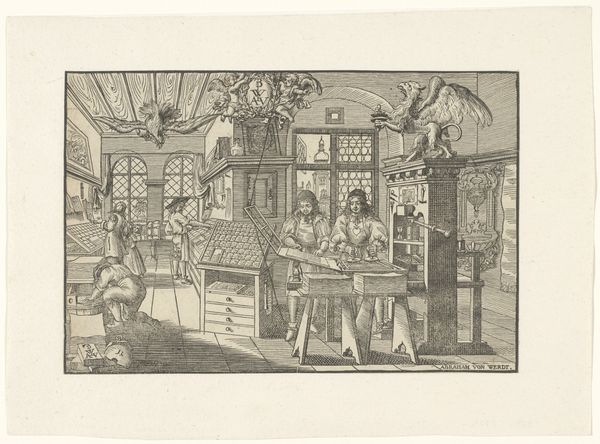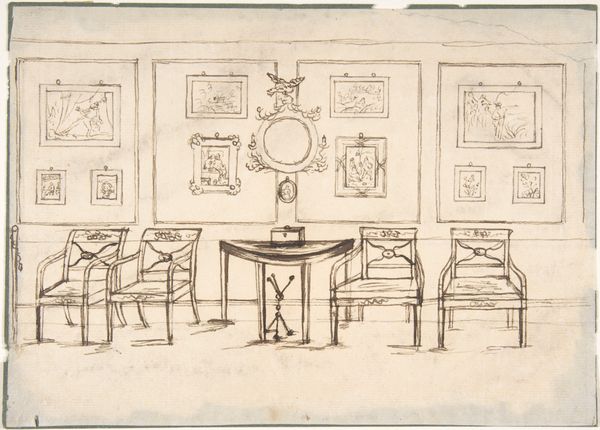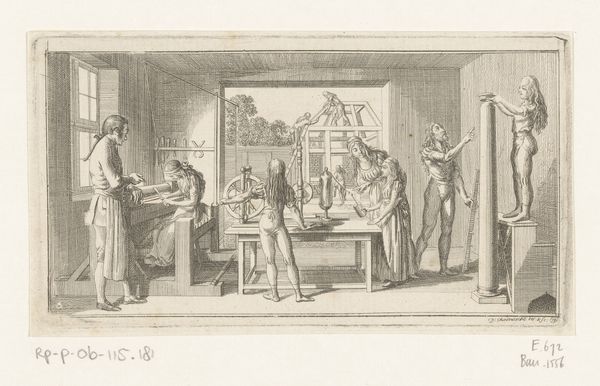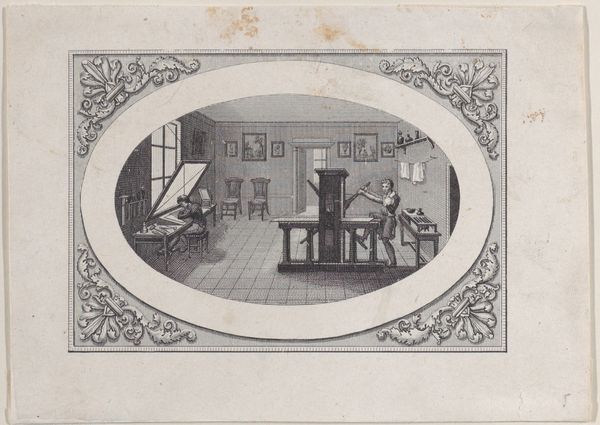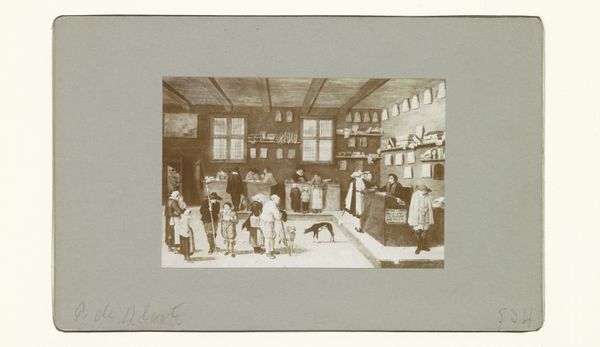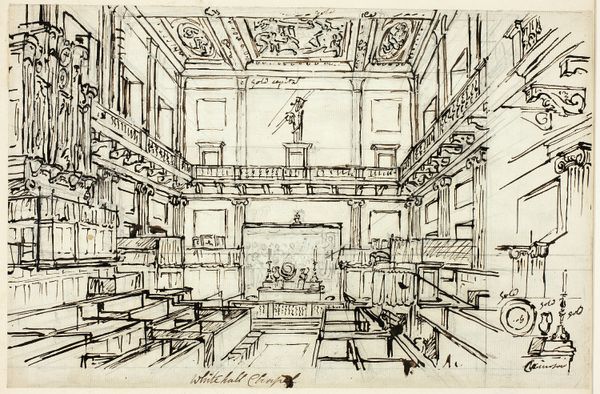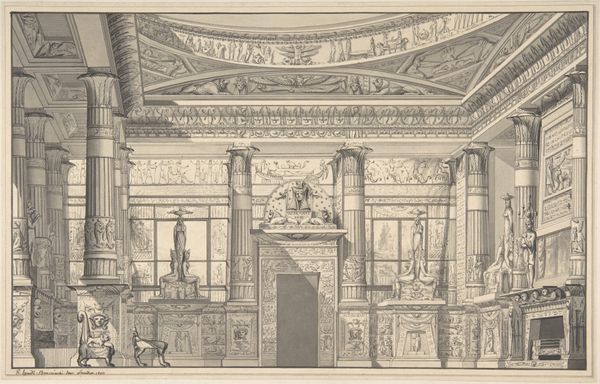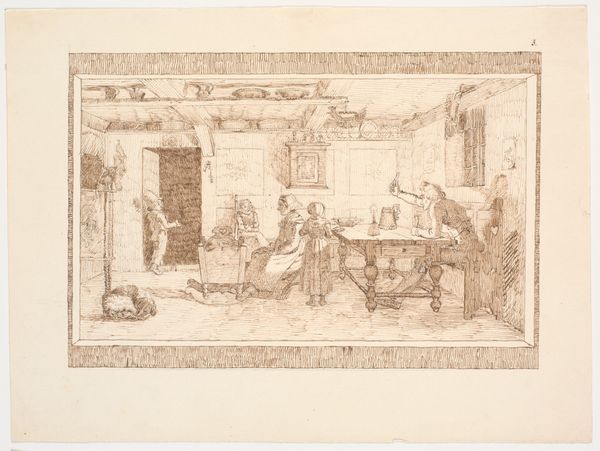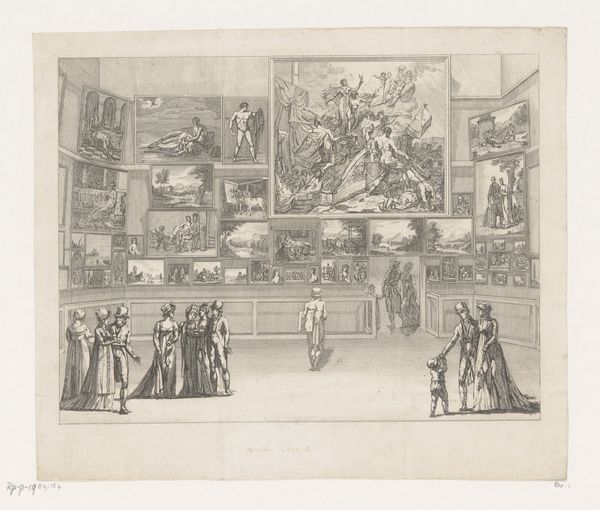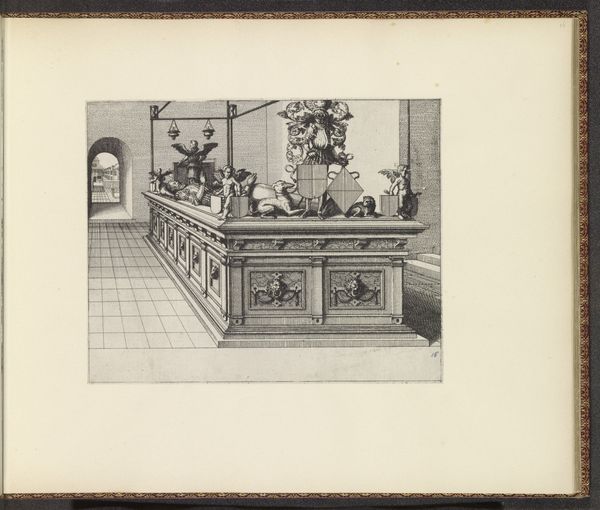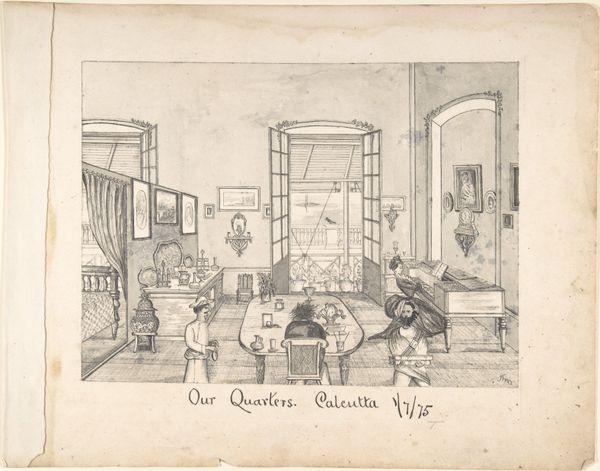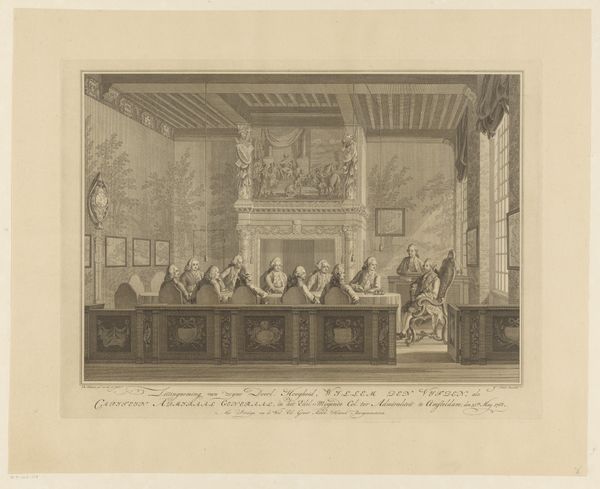
drawing, print, etching, ink, engraving
#
drawing
#
baroque
# print
#
pen illustration
#
etching
#
old engraving style
#
perspective
#
ink
#
pen-ink sketch
#
genre-painting
#
history-painting
#
engraving
Dimensions: height 250 mm, width 384 mm
Copyright: Rijks Museum: Open Domain
Curator: This is “Kabinet van Sébastien Leclerc,” made with ink, etching, and engraving during the late 17th or early 18th century, now at the Rijksmuseum. The image shows the workshop of the artist. It seems busy! Editor: Yes, busy and controlled. So many tools. And a meeting happening center stage! What is that cabinet’s story? Curator: The depicted objects—mathematical instruments, models, and artwork—were commodities. It underscores how artistic and scientific practices intersected. These items were luxury goods reflecting the patronage of Leclerc's time. This setting highlights how artisanal labor contributed to culture under elite commissions. Editor: And that brings up questions about access to knowledge and power. It seems Leclerc situates his role within an evolving socio-political structure. His prints, multiplied and circulated, served as knowledge disseminators but for whom, and controlled by whom? It brings light to these early formations of "public" intellectual spaces and raises many questions about its audiences. Curator: Certainly. Notice the details: see the lines on the wall? This artwork acts as a diagram of itself, emphasizing perspective and technique within the workshop. The print reveals the intersection of artisanal and artistic production. Its display reflects a calculated presentation for an elite audience. Editor: I agree, it invites analysis that expands on how spaces produce and reproduce societal order, revealing both innovation and limitations in the early Enlightenment-era structures. The composition almost presents these endeavors—science and art—as acts performed on display within systems that privileged specific kinds of intellect and influence. Curator: Fascinating. Leclerc meticulously details instruments as objects with productive potential. From a materialist viewpoint, one might question whether art provides genuine knowledge or if it is more akin to showcasing technological commodities within a closed sphere of academic elite. Editor: Yes, and examining who benefitted or bore burdens from this "knowledge revolution" gives critical purchase over conventional narratives! What seems innovative on the surface contained systems perpetuating uneven social relations that are just becoming clear! Curator: Ultimately, a piece that encapsulates evolving tensions present between craftsmanship and enlightenment philosophy. Editor: Agreed. Art and society caught in dynamic tension then, much like they still are now!
Comments
No comments
Be the first to comment and join the conversation on the ultimate creative platform.
